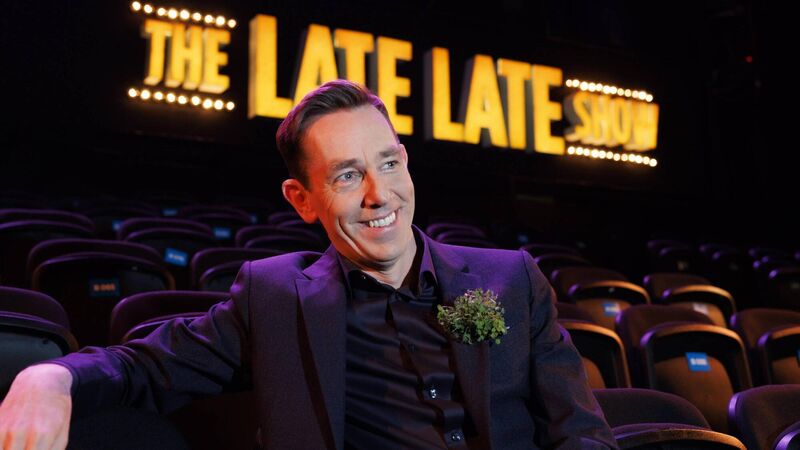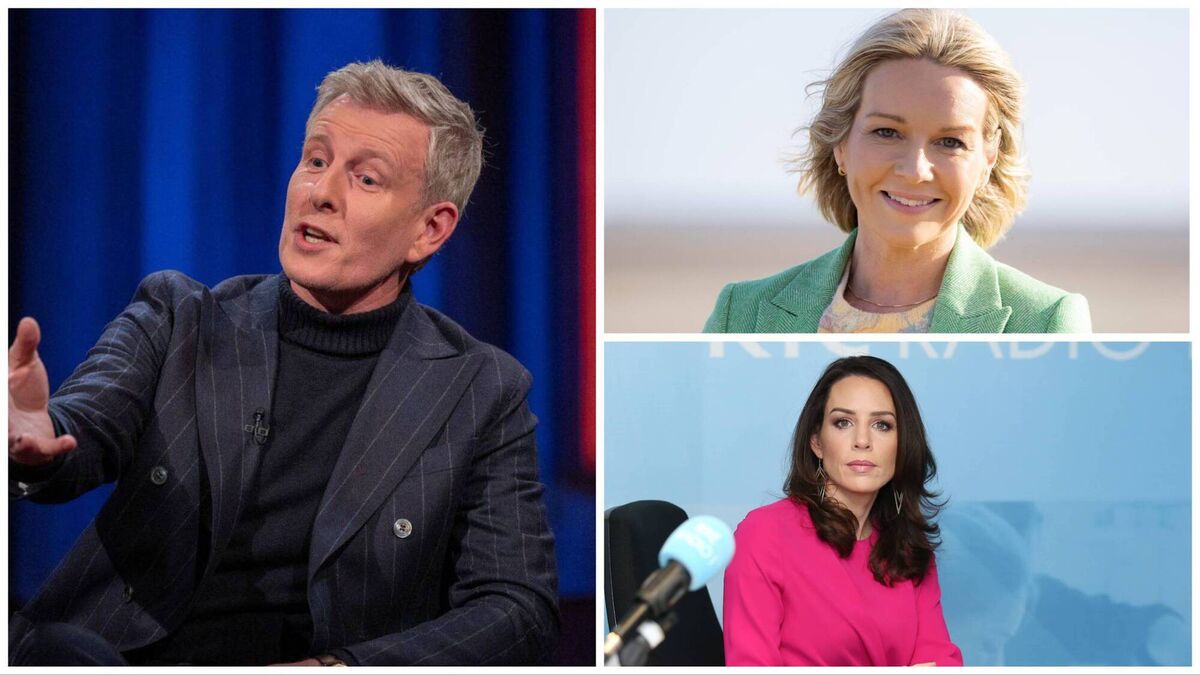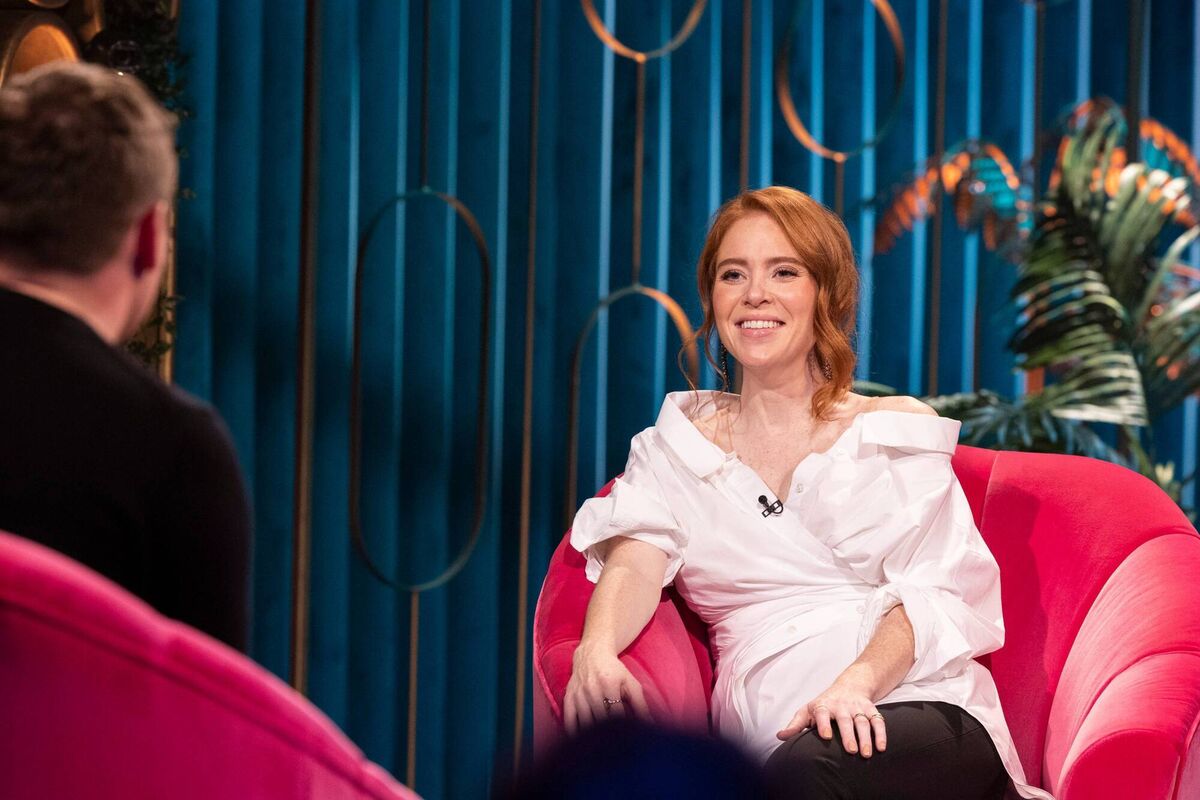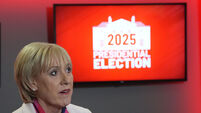New ‘Late Late Show’ must follow the three Rs for success

Ryan Tubridy has done a very good job of keeping the ship afloat for the Late Late Show, in particular during the pandemic. Picture: Andres Poveda
When was conceived by producer Tom McGrath back in 1962, it was based on a Canadian talk show prototype with some cosy chat, intermixed with music — nothing too cerebral or too challenging.
A young 26-year-old host Gay Byrne changed all that and in time, the show tethered on being denounced on a weekly basis from the pulpit, to being heralded as a ventilator and commentator on public morals and mores. It never strayed far from the headlines.
Now in pursuit of a new presenter, the show, which turns 61 in July, has changed little from those halcyon days when everyone was shocked by everything, and Byrne dismantled sacred taboos with consummate regularity. Now outrage has become outré, and Ireland has become less censorious and more considered.
Where does that leave the and how can its format be reinvigorated to appeal to a broader base?
RTÉ has no desire to abandon its lucrative prime time advertising position. it is ultimately about commercial success and capitalizing on much-needed revenue. Nonetheless, bosses at RTÉ have to change their mindset: Tubridy has done a very good job of keeping the ship afloat, in particular during the pandemic. His resignation obviously caught them off guard and there appears to be no succession planning.
Advertisers are understandably nervous. The mood is not good.
It has not helped that the top female presenters, as scarce as lifeboats on the Titanic, have jumped ship before it even set sail on its new voyage. All three women, Miriam O’ Callaghan, Clare Byrne and Sarah McInerney have resolutely removed themselves from being pitted against each other in any public battle over Tubridy’s heir(ess).

Tommy Tiernan was being mooted as a contender but then the could be in danger of becoming — and we’ve had seven years of that already. Put simply, the next iteration of the needs to embrace a newer, younger audience as well as bringing with it those remaining loyal to the show — a herculean task!
When Byrne retired in 1999 as host, much of his audience retired with him, many of whom had grown old with the show. Tubs had added a modicum of youthfulness as he turns 50. Should RTÉ embrace youth or experience? A safe pair of hands like those of the versatile Brendan O’ Connor or Patrick Kielty, who, rumour has it, might just get the daunting role.
Unfortunately, RTÉ has nurtured little in the way of new talent and with our top female presenters firmly out of the running, who you gonna call?
The only immediate female star who comes to mind with popular appeal, is the vibrant redhead Angela Scanlon. Her dual career on both RTÉ and BBC, as well as her pedigree as a major Instagram influencer with an impressive 258K followers, might induce that elusive 25– to 45-year-old TV audience back to Friday viewing.
However, the news is grim. Viewership figures for the show (apart from the Toy Show, which brought in 1.7 million viewers) plummeted to 400,000 in 2022.
In truth, we no longer need the to disclosure and excavate our silent scandals; all our Troys have been burnt. Moreover, we no longer need the to introduce us to celebrities; they are all oversharing on Instagram and Twitter.

The has survived because it is a uniquely Irish phenomenon which celebrates and elevates our indigenous culture. How can this aspect of the show be effectively harnessed while simultaneously entertaining and embracing new audiences?
Ultimately, it's decision time for RTÉ and I have a number of suggestions: first up, they will have to be very clear where their current target audience lies; then the sheer duration of the show will need to be addressed. In a world of soundbites, life is too short to sit through two hours of anything! At least those in studio get their “one for everyone in the audience”.
Thus, a shorter, pacier show — with more personal story telling and less endless book selling. Not only is a fresh presenter required but also a fresh production team. Talk to Graham Norton’s crew — they keep it consistently entertaining within its 50-minute slot, and celebrities are scrambling to be part of the show.
The was always a hybrid, moving chameleon-like from light to dark, and in those early years, it was live and dangerous, and no one knew what was coming next. Perhaps because it is live, fear of litigation has kept its content staid.
Here’s a suggestion: pre-record the show. The Graham Norton Show is recorded in front of a live audience on a Thursday and goes out on a Friday. Who knew? That way, any potentially litigious material can be removed, but for God’s sake give it a new lease of life.
In brief, it’s back to the three Rs! Record the show; reboot and revisualize its content and its production team; reduce the show to a maximum of 80 minutes. The was the ultimate disrupter back in 1962 — bold and brash, feeding into the zeitgeist. It was unmissable.
RTÉ must announce a new presenter very soon. If not, there will be nothing for everyone in the audience as advertisers sail away and seek another show with a host who can assume the mantle of The Great Window Opener.
- Dr Finola Doyle O’Neill is a Broadcast and Legal Historian at the School of History UCC. She is the author of The Gaybo Revolution: How Gay Byrne Challenged Irish Society
















